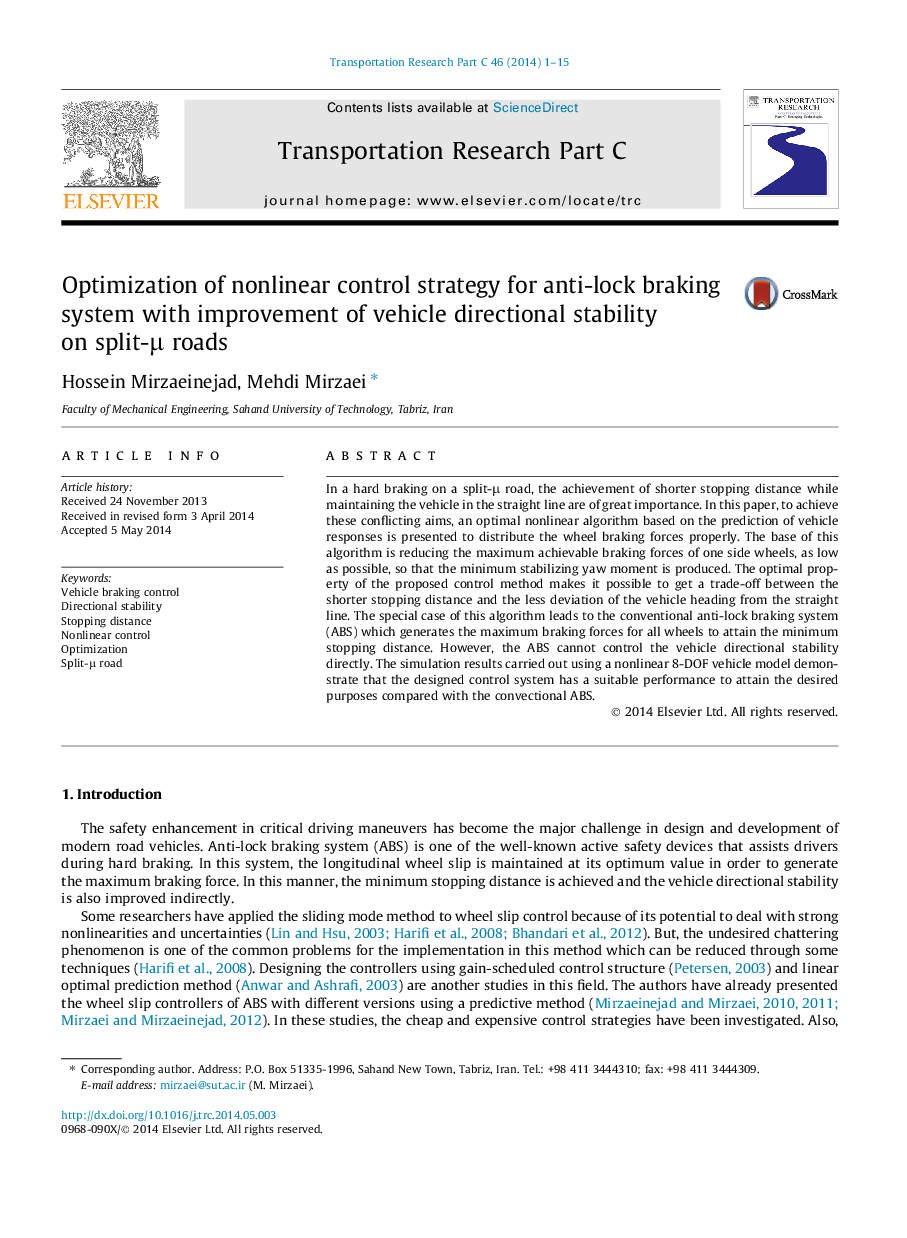| Article ID | Journal | Published Year | Pages | File Type |
|---|---|---|---|---|
| 6937062 | Transportation Research Part C: Emerging Technologies | 2014 | 15 Pages |
Abstract
In a hard braking on a split-μ road, the achievement of shorter stopping distance while maintaining the vehicle in the straight line are of great importance. In this paper, to achieve these conflicting aims, an optimal nonlinear algorithm based on the prediction of vehicle responses is presented to distribute the wheel braking forces properly. The base of this algorithm is reducing the maximum achievable braking forces of one side wheels, as low as possible, so that the minimum stabilizing yaw moment is produced. The optimal property of the proposed control method makes it possible to get a trade-off between the shorter stopping distance and the less deviation of the vehicle heading from the straight line. The special case of this algorithm leads to the conventional anti-lock braking system (ABS) which generates the maximum braking forces for all wheels to attain the minimum stopping distance. However, the ABS cannot control the vehicle directional stability directly. The simulation results carried out using a nonlinear 8-DOF vehicle model demonstrate that the designed control system has a suitable performance to attain the desired purposes compared with the convectional ABS.
Related Topics
Physical Sciences and Engineering
Computer Science
Computer Science Applications
Authors
Hossein Mirzaeinejad, Mehdi Mirzaei,
